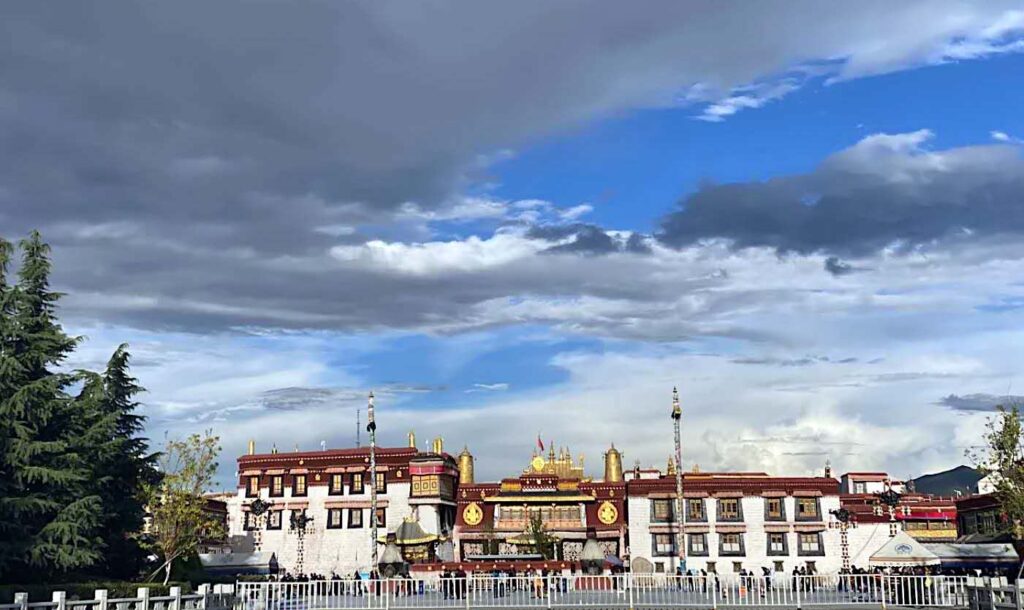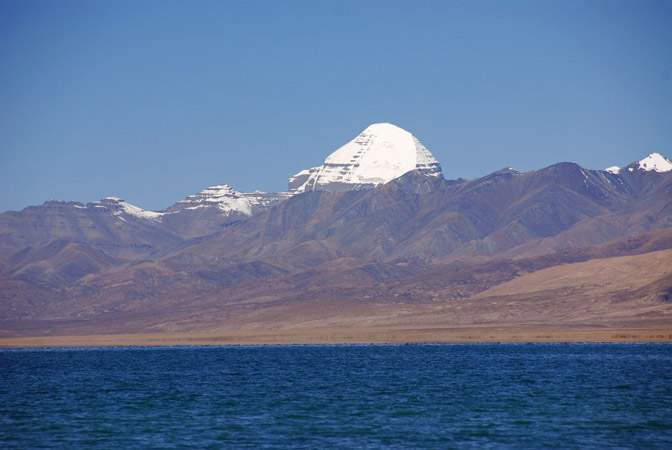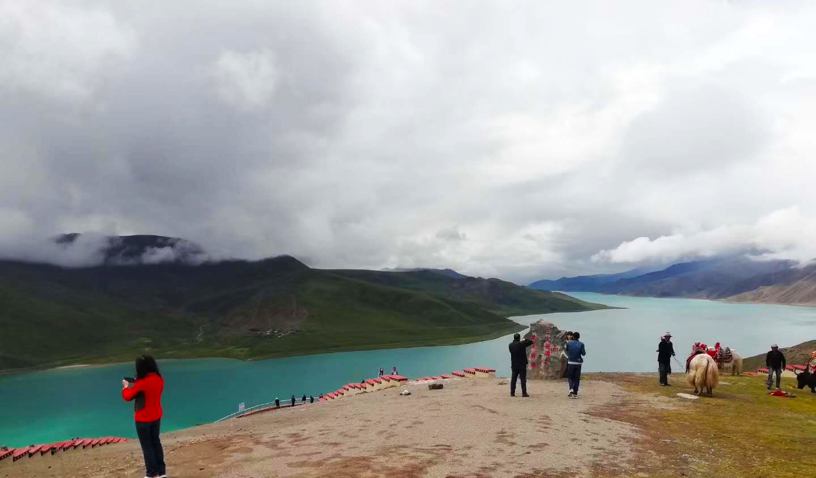The mystical land of Tibet, often referred to as the “Roof of the World,” has long been a destination that has captivated the hearts and minds of travelers. With its breathtaking landscapes, ancient monasteries, and deeply rooted cultural traditions, Tibet travel offers a unique experience that is unparalleled anywhere else in the world. This article aims to uncover the best travel activities in Tibet, ensuring a memorable and enriching journey for all who venture into this awe-inspiring land.

1. Visit the Iconic Potala Palace
No Tibet travel experience would be complete without a visit to the iconic Potala Palace. That’s why all the Tibet tours start from Lhasa City. This architectural marvel, located in the heart of Lhasa, is a UNESCO World Heritage site and was once the winter residence of the Dalai Lama. The palace’s striking red and white façade stands in stark contrast to the surrounding mountains, making it a sight to behold. Inside, visitors can explore the various chapels, halls, and living quarters that provide a glimpse into the lives of Tibet’s spiritual leaders.
2. Explore the Jokhang Temple and Barkhor Street
Another must-visit destination during your Tibet travel is the Jokhang Temple, considered the holiest site in Tibetan Buddhism. This ancient temple, also located in Lhasa, is said to house a statue of the Buddha that was brought to Tibet by Princess Wencheng of the Tang Dynasty. The temple is surrounded by Barkhor Street, a bustling market area filled with colorful shops selling traditional Tibetan handicrafts, clothing, and religious artifacts. Strolling along Barkhor Street is an excellent way to immerse yourself in the local culture and pick up some unique souvenirs.

3. Experience the Serenity of Lake Namtso
Lake Namtso, one of the highest saltwater lakes in the world, is a place of unparalleled natural beauty. With its crystal-clear waters, snow-capped peaks, and vast grasslands, Lake Namtso is a photographer’s dream. Visitors can also experience the unique culture of the local nomads, who maintain a traditional way of life in this remote region. A trip to Lake Namtso is a must for any Tibet travel itinerary, as it offers a chance to witness the mesmerizing beauty of the Tibetan Plateau.

4. Trek to Mount Everest Base Camp
For adventure-seekers, no Tibet travel experience would be complete without a trek to Mount Everest Base Camp. As the world’s highest peak, Mount Everest has long been a lure for mountaineers and trekkers alike. The journey to the base camp offers a challenging yet rewarding experience, and with stunning views of the Himalayas. Get a chance to experience the unique culture of the local people. Be sure to acclimatize properly and hire a knowledgeable guide to ensure a safe and enjoyable trek.
5. Discover the Mysteries of the Ancient Monasteries
Tibet is home to numerous ancient monasteries, each with its own unique history and cultural significance. A visit to some of these monasteries is a must for any Tibet travel itinerary. As they offer a fascinating window into the region’s spiritual traditions. Some of the most famous ancient monasteries in Tibet are Sera Monastery, Drepung Monastery, Gaden Monastery, and Samye Monastery.

6. Spiritual journey of Mount Kailash and Lake Mana Sarovar
Nestled amidst the majestic peaks of the Himalayas in the Tibet Autonomous Region, Mount Kailash, and Lake Manasarovar have long been regarded as sacred sites for Hinduism, Buddhism, Jainism, and the indigenous Bon religions. The extraordinary landscapes amazing vistas, and the spiritual energy. That surrounds these sites make them ideal destinations for both adventure enthusiasts and spiritual seekers.
Mount Kailash: The Abode of the Gods
Standing tall at 6,638 meters (21,778 ft), Mount Kailash is a striking black peak that dominates the Trans-Himalayan range in southwestern Tibet. According to Hindu mythology, the mountain is the residence of Lord Shiva. The destroyer and transformer, who sits in eternal meditation at the summit. Buddhists believe that Mount Kailash is the home of Demchok, a wrathful deity, while for Jains, it is the place where their first spiritual leader, Rishabhadeva, attained enlightenment. For Bon followers, the mountain is the site where their founder, Tonpa Shenrab, descended from the heavens.

Kailash Kora: A Sacred Pilgrimage
The Kailash Kora, or circumambulation, is a 52-kilometer (32-mile) trek around the sacred peak, which pilgrims of different faiths undertake to cleanse themselves of sins and gain spiritual merit. As an ancient tradition, the kora is believed to bring good fortune, and completing one circuit is said to absolve a person of a lifetime’s sins. Some devout pilgrims even perform full-body prostrations during the entire kora, a challenging feat that can take several weeks to complete.
The kora begins at the small village of Darchen, situated at the base of Mount Kailash. The trail takes pilgrims through a diverse landscape of verdant valleys, barren mountainsides, and glacial moraines. The highest point of the kora is the Dolma La Pass, which stands at an altitude of 5,630 meters (18,471 ft) and is adorned with countless prayer flags, symbolizing the prayers of pilgrims who have crossed the pass.
Lake Manasarovar: A Pool of Purity
Nestled at the foot of Mount Kailash, the serene Lake Manasarovar is considered one of the holiest lakes in Asia. Spanning over an area of 320 square kilometers (120 square miles) and with a depth of up to 90 meters (300 ft), the lake’s crystal-clear waters are believed to cleanse one’s soul of sins and negative karma. According to Hindu mythology, the lake was created by Lord Brahma, the creator of the universe, to offer a suitable place for meditation and pilgrimage.

The lake’s name is derived from the Sanskrit words ‘Manas’ (mind) and ‘Sarovar’ (lake), signifying the belief that bathing in the sacred waters of Manasarovar purifies the mind and soul. Pilgrims from around the world gather at the lake, particularly during the auspicious full moon nights, to perform ritual baths and pay homage to their respective gods.
7. Enjoying the spectacular view of Yamdrok Lake
That sounds wonderful! Yamdrok Lake is a stunningly beautiful location in Tibet, known for its clear turquoise waters and breathtaking mountain scenery. It’s one of the three largest sacred lakes in Tibet and is considered a spiritual place by many Tibetans.

If you’re visiting Yamdrok Lake, there are several things you may want to see and do. You can take a boat ride on the lake to get a closer look at its beauty or hike along its shoreline to enjoy the scenery. There are also several monasteries and temples in the area that are worth visiting, such as Samding Monastery and the Palkhor Monastery. Additionally, it’s important to be respectful of local customs and traditions while you’re visiting Tibet.
In conclusion, Tibet offers a unique and enchanting travel experience filled with breathtaking landscapes, rich cultural heritage, and numerous spiritual and adventure activities. From witnessing the grandeur of the Potala Palace to trekking around the sacred Mount Kailash. And from exploring the serenity of Lake Yamdrok to immersing oneself in the tranquil atmosphere of local monasteries, Tibet promises unforgettable memories for every traveler seeking a truly distinctive and transformative journey.

[…] embarking on your Tibet adventure, it’s crucial to conduct thorough research and plan your trip well in advance. Start by […]